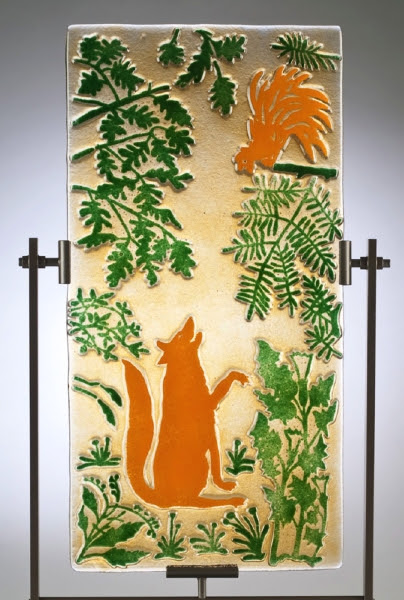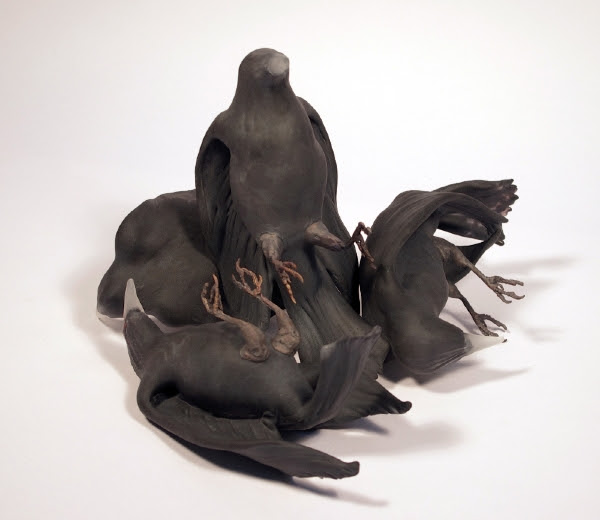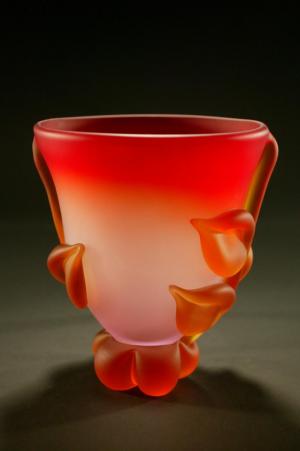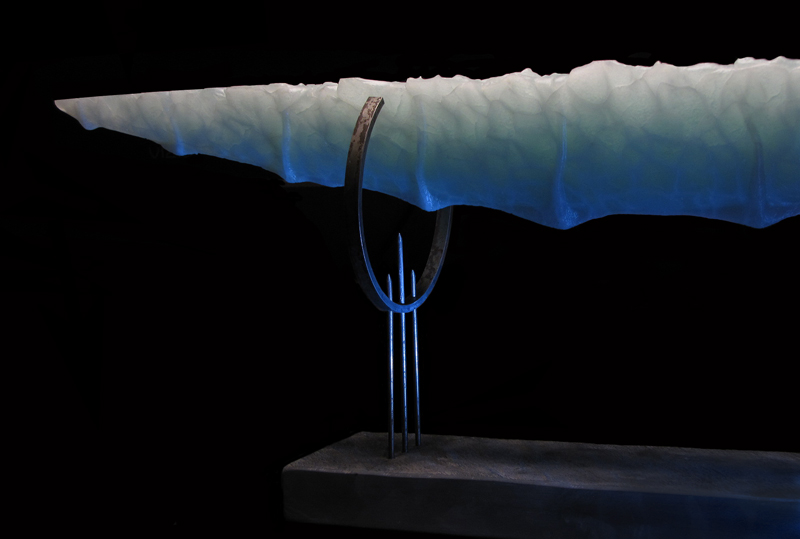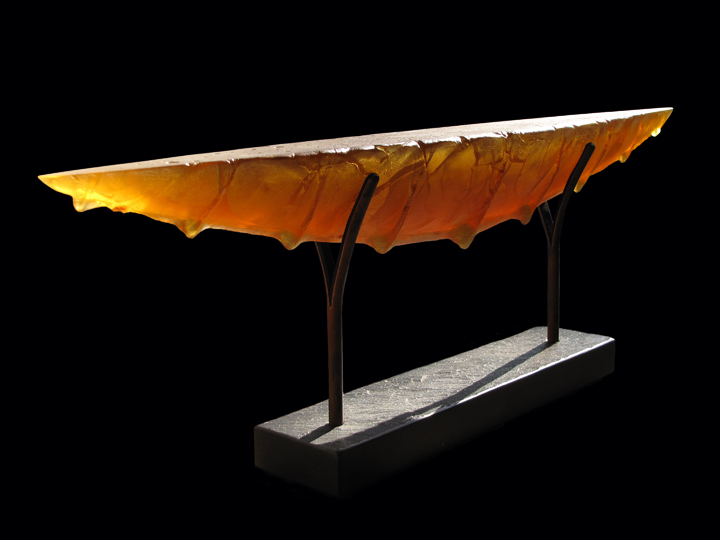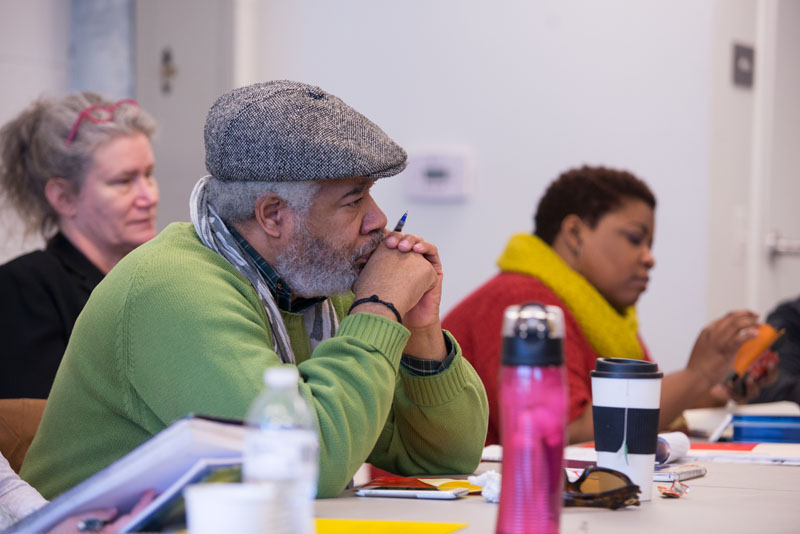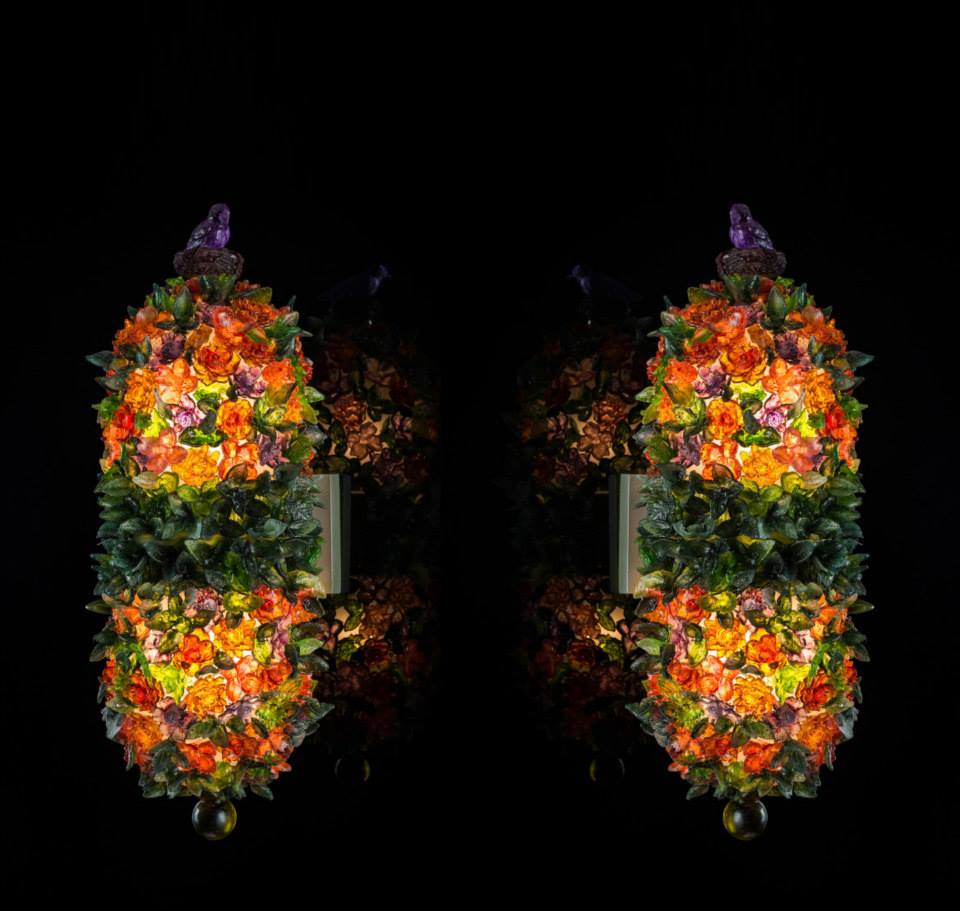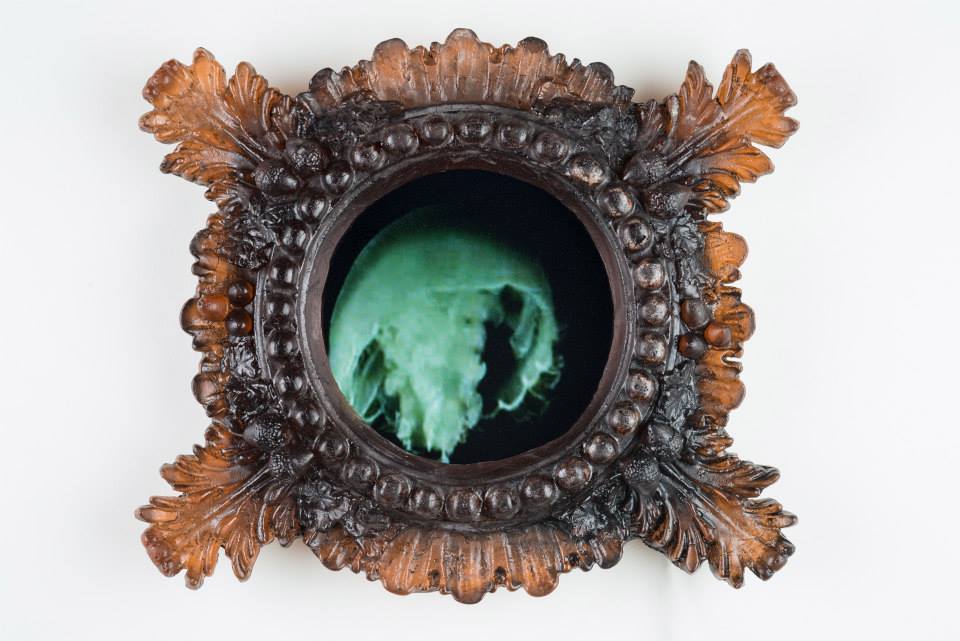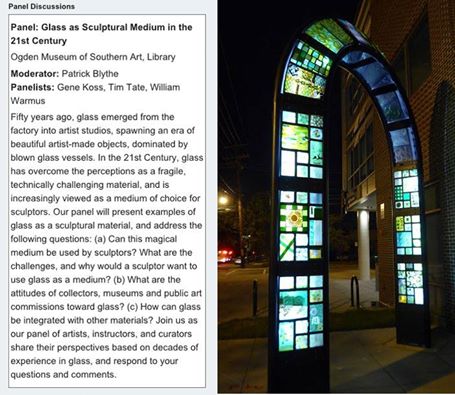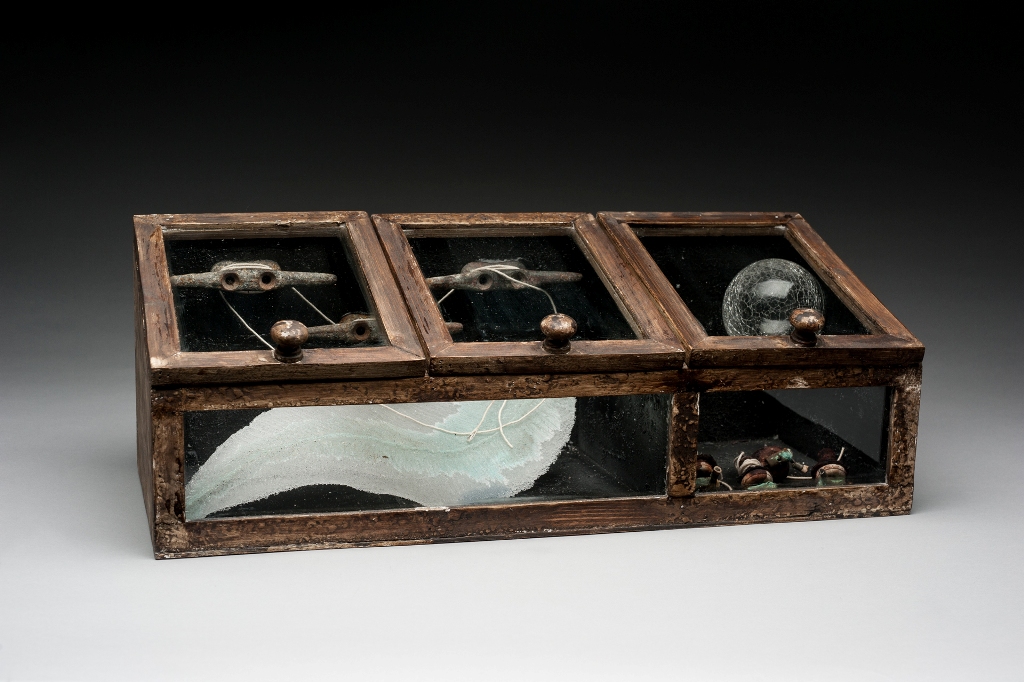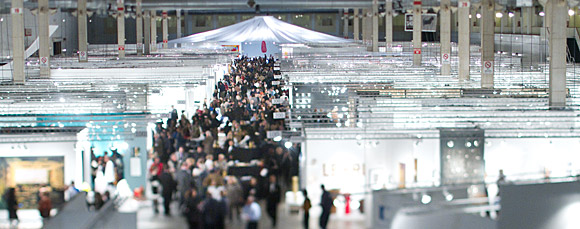
Every fall – for the past 20 years – Chicago, IL hosts the internationally acclaimed Sculpture Objects & Functional Art Fair (aka SOFA Chicago).
The 21st SOFA Chicago will be held November 7 – 9, 2014 at Navy Pier’s Festival Hall where masterworks from top international galleries and dealers from numerous countries will exhibit. Opening night gala preview will be held Thursday, November 6.
Washington Glass School is represented by artists Michael Janis and Allegra Marquart at Maurine Littleton Gallery and Sean Hennessey and Tim Tate are exhibiting at Habatat Galleries Space.
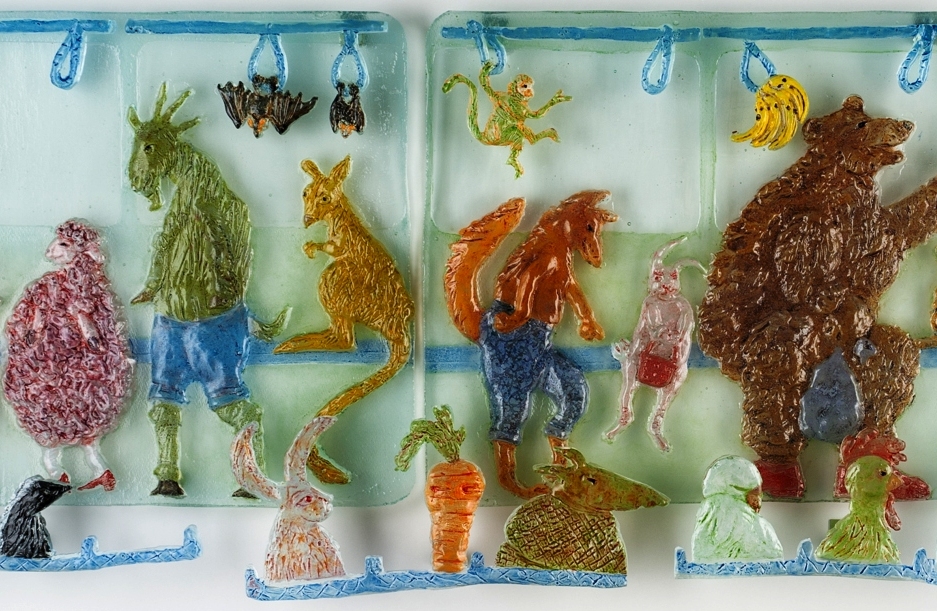
Allegra Marquart, “On The Bus” (detail), 2014, cast glass, enamel; OA dimensions 48″ L x 24″ H. Photo by Anything Photographic
Allegra Marquart will present a number of her new wall installations. Her new works are not strictly narrative but relate to etchings the artist made years ago when she first moved to the city and began interpreting what she saw on the streets with humor and an eye for juxtaposing disparate situations and individuals.

Sean Hennessey, “The Fur-Suit of Happiness” Cast Glass, Paint, Video
(Photo by Anything Photographic)
Sean Hennessey will be showing his cast glass/ mixed media panels at Habatat Galleries. His new works integrate electronics and videos into the panels.
Tim Tate will be showing his installation “The Healing Polyopticon” – a 5 ft wide installation consisting of 16 video pieces in varying sizes of cast black frames. Each video is in the form of an eye blinking; each eye different. Surrounding this cluster of 16 video frames are cast black flowers that fills out the 5 ft wide circle . The work is based on a terminal diagnosis he received 30 years ago – and he imagined that he was being kept safe by those who passed before him – all keeping an eye on him thru portals. In this sculpture he portrays people who had effected his life in a positive way…keeping him from passing over, making him safe; imbuing him with self healing energy. This powerful sculpture will at Habatat Galleries space.
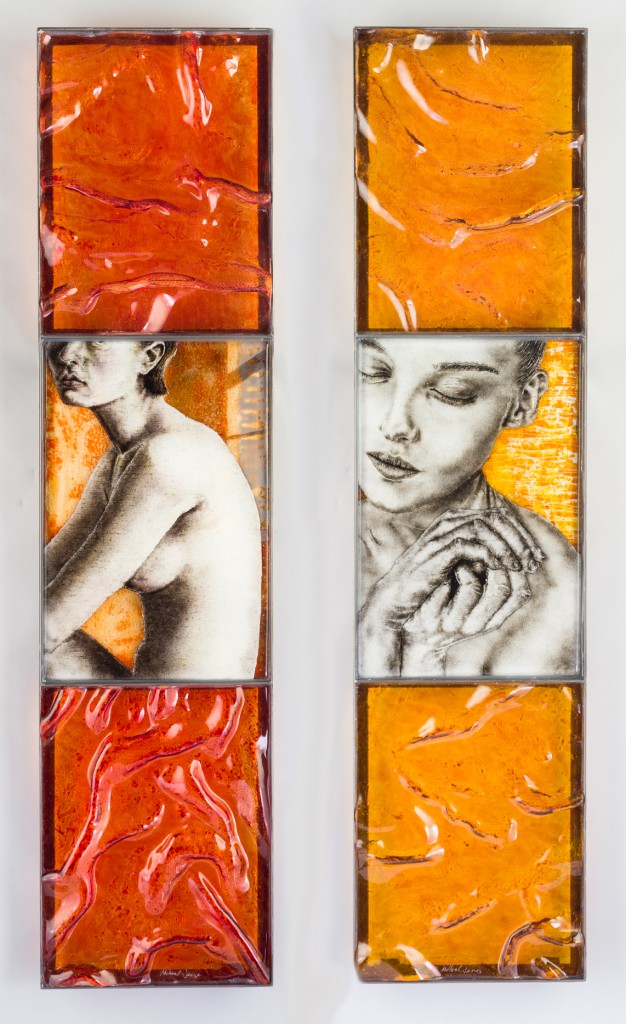
Michael Janis, “Breathing In The Quiet” and “Waiting For The Lover’s Words”, fused glass powder imagery, glass, steel. (Photo by Anything Photographic)
Michael Janis will be showing a number of new works at Maurine Littleton Gallery space. The American Institute of Interior Designers (ASID) chose his work as part of their picks for SOFA Selects – where highlighted pieces chosen by noted curators, designers, and critics give viewers of the fair way to navigate the huge show.
If you are going to the show – be sure to stop by and visit with the artists – all will be at the Chicago Fair!
